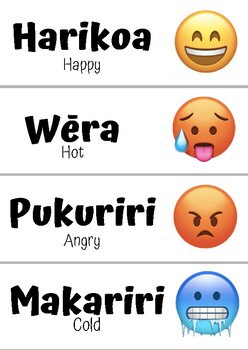Loving Languages: Teaching “How Are You?” in Maori to Your Children
Welcome, lovely parents! Are you looking for a heartwarming way to introduce your precious ones to the beautiful Maori language? You’re in exactly the right place! Learning a new language can be a delightful bonding experience for you and your kids and what better place to start than with the basics of greeting someone in Maori. Today, I’m thrilled to guide you through saying “How are you?” in Maori.
The Significance of Maori Language
Before we jump in, let’s appreciate the significance of the Maori language (Te Reo Maori) in New Zealand’s culture. It’s not just words and phrases—it’s a gateway to understanding the rich heritage and values of the Maori people. By teaching your children these expressions, you’re giving them much more than a language skill; you’re opening a world of cultural empathy and respect.
How to Say “How Are You?” in Maori
The phrase Kei te p?hea koe? (pronounced as ‘kay teh pay-hea koh-eh’) translates to “How are you?” in English. It is a polite and commonly used phrase in Maori that you can teach your youngsters to use. It’s perfect for asking someone about their well-being and showing that you care.
Let’s break down the pronunciation:
- Kei – sounds like the English word ‘kay’
- te – pronounced as ‘teh’, similar to the ‘te’ in ‘ten’
- p?hea – pronounced ‘pay-hea’, with the ‘ea’ like the ‘ea’ in ‘bear’
- koe – pronounced ‘koh-eh’, with the ‘oe’ as in ‘vet’
Practice Tip: Try repeating the phrase together with your kids, perhaps in front of a mirror to make it fun and memorable. Remember, consistency and repetition are key in language learning!
Understanding The Response
It’s one thing to ask the question, but it’s another to understand the answer. Generally, in response to Kei te p?hea koe? you might hear Kei te pai (kay teh pie), meaning “I’m good” or “I’m fine”. This exchange is a simple yet robust foundation for your child’s journey into the Maori language.
There are several other responses you might encounter, such as:
- Kei te pai ahau – I am good (the “ahau” means “I”)
- Kei te ngenge ahau – I am tired
- Kei te hiakai ahau – I am hungry
- Kei te mauiui ahau – I am sick
Encouraging Cultural Awareness Through Language
Teaching your children to inquire about others’ well-being in Maori is more than just learning a phrase; it’s encouraging cultural awareness. Take the opportunity to discuss with your kids why it’s important to learn about and respect different cultures and languages.
Fun Ways to Practice Maori Greetings
Making the learning process enjoyable will help your children embrace Maori greetings with enthusiasm. Here are some ideas to make practice sessions exciting:
- Role-play: Create simple dialogues where they can use the phrase in conversation.
- Music: Find songs in Maori that incorporate greetings and sing along!
- Storytelling: Read stories about New Zealand’s culture and weave in Maori words.
- Interactive Games: Design games, such as Maori greeting bingo or matching games.
Remember, the goal is to nurture a love for languages and cultures, and what better way to do that than with games and stories?

Embracing Te Reo: A Parent’s Guide to “How Are You?” in Maori
Welcome delightful parents! If you’re eager to start your family’s journey into the enchanting Te Reo Maori, beginning with the basics such as the traditional greeting, “How are you?” is a fantastic choice. Not only is it a gentle entry into a new language, but it’s also a wonderful way to bring the vibrant Maori culture into your home. This guide is lovingly crafted to help you navigate this new terrain joyfully and confidently.
Five Things Parents Should Know About Maori Greetings
1. The Beauty of Te Reo Maori
Before diving into the how-tos, let’s take a moment to appreciate Te Reo Maori, a treasure of New Zealand and a crucial part of the Maori cultural identity. It’s a language that sings with history and depth. When your children learn to say “How are you?” in Maori, they join a community that cherishes and sustains this beautiful language.
2. The Importance of Pronunciation
Pronunciation is key in Maori, as it conveys respect for the language and its speakers. The phrase Kei te p?hea koe? may have similar sounds to English, but it’s important to practice them with your little ones until they’re confident. Don’t worry about perfection; it’s the effort and intent that count.
3. Responses and Interaction
Knowing the question is one thing, but being ready for the answer is another. Teach your children common responses so they can engage in a meaningful exchange. Encourage them to ask and answer the question with you and other family members regularly.
4. Cultural Significance and Etiquette
Understand that a greeting is more than a formality; it’s a way to show respect and care for the person you’re speaking with. Help your children grasp the cultural richness behind what they’re learning, and model this respect yourself.
5. Make It Fun and Relevant
Turn the language learning process into an adventure. Use songs, stories, and games. Connect the phrases your children learn with people they can greet, places you can visit, or events that celebrate Maori culture. The more meaningful and enjoyable the process, the stronger their connection to Te Reo Maori will be.
Friendly Phrases: Saying “How Are You?” in Maori
Now, let’s hop right into learning our greeting. Remember, engaging regularly with these phrases will make them a natural part of your family’s vocabulary. Here are some conversation starters that include asking “How are you?” that you can practice with your kids:
- Kei te p?hea koe? — How are you?
- Kei te p?hea t?ua? — How are we? (two people)
- Kei te p?hea t?tou? — How are we? (three or more people)
Pronunciation and Practice
Perfect your pronunciation through fun practice! Here’s a cheerful little ditty you can sing to the tune of a well-known nursery rhyme to help those new sounds stick:
"Kei te pehea koe, my dear, oh koe?
How are you today, say we'd love to know!
Say it with a smile, oh kia ora, hi!
Learning Te Reo Maori, under the big sky!"
Your children will adore singing this while performing the actions. Encourage them to share the song with friends for an extra layer of practice and joy!
Language Building Blocks: Translating Responses
As your children become more comfortable with asking “How are you?” in Maori, teaching them common responses will deepen their understanding and ability to communicate. Practice these phrases and perhaps even create a wall chart for reference:
- Kei te pai ahau — I’m fine (feeling good).
- Kei te ngenge ahau — I’m tired.
- Kei te hiakai ahau — I’m hungry.
- Kei te mauiui ahau — I’m not feeling well (sick).
Cultural Connections: Beyond the Phrases
As you guide your children’s language exploration, seize the opportunity to explore Maori culture together. Perhaps you can integrate learning about local history, attend cultural events, or enjoy Maori myths and legends.
Maori Language Fun for the Family
Beyond memorization lies the land of creativity! Invent games like “Maori Word of the Day” or create Maori flashcards. Find local community groups or online resources that bring Te Reo Maori to life with fun activities and interactive lessons.
Cultural Immersion: The Next Steps
To truly embrace a language, immersing in its associated culture provides the richest learning. Consider incorporating Maori foods, arts, and traditions into your family activities. This hands-on approach not only reinforces the language but also cultivates a deeper understanding of the diverse world we live in.
Conclusion
Starting with a simple greeting like “How are you?” in Maori can open the doors to a larger conversation about cultures, kindness, and community. Alongside the fun, this can be an opportunity for profound learning and connection within your family. So go ahead, sing, play, and greet each other in Maori as you weave this beautiful language into the tapestry of your everyday life.




